How many times have you gone to the nursery wanting to buy something to improve your soil (because that’s what they tell you to do before planting anything) and only come away more confused than before you went in?
There seems to be dozens of bags to choose from: potting mixes, composts, soil conditioners, mulches, manures and that’s just the broad categories! Mixes and blends are then labelled standard, premium, organic, natural, regular, certified, standardized ….. the list goes on. How do you know what’s what?
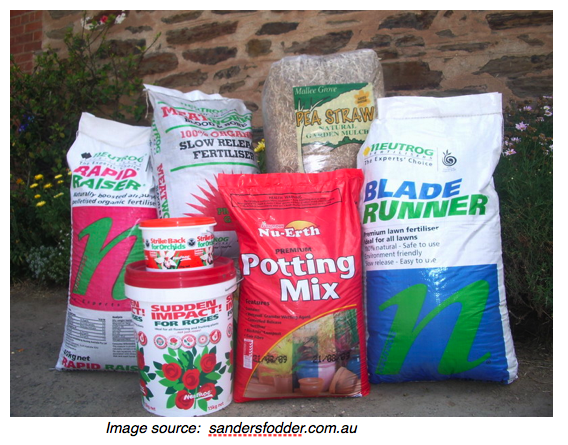
Well, I recently went along to the briefing seminar for the release of the new Australian Standards on Compost AS4454 (2012) to find out the answer. (I know … I hear you … I really should get a life!) I arrived late thanks to Sydney traffic, and to my surprize, walked into a room packed with men wearing collars and ties …. hardly a woman in sight and my Veggie Lady polo shirt did seem a little out of place. Who’d have thought that composters would dress so formally! I later found out that they were mostly management or laboratory testers. But nevertheless, my curiosity as a backyard gardener and composter was not disappointed.
Compost vs Potting Mix
An important distinction was made early between what is a compost and what is a growing medium. Potting mix is designed for growing plants. A compost is not to be used on its own as a growing medium but is meant to be mixed into the soil instead. As such, a compost will have different levels of mineral balance and moisture holding capacity than a plant growing mix. So, as a home gardener, make sure you always mix bagged compost in with other soil in the garden or with other potting mixes and materials when using it in container gardens, because it could be too strong for your plants and actually do harm to their growth.
The new regulations actually lifted the exacting standard required previously for copper and zinc levels because compost is designed to be incorporated into background soil and not used exclusively as a growing mix. As long as we still have copper water pipes we will continue to have high levels of copper residues unfortunately. Higher levels of zinc and copper were deemed satisfactory when balanced out with other materials or soil under the new standard.
Classification
The classification of mulches, composts and soil conditioners is simply defined by the particle size. The definition in decreasing order of size is coarse, fine or soil conditioner.
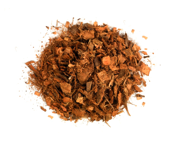
Mulches are therefore, broadly defined as coarse materials that allow irrigation and rain water to filter through easily. They are mainly woody and will have a higher carbon:nitrogen ratio (you may now find that the C:N ratio figure is listed on the label of the bag). Mulches are meant to sit on top of the soil and not mixed in and will take longer to break down.
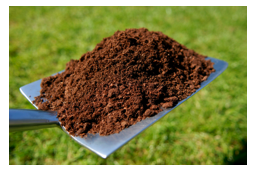
Composts contain fine materials and are meant to be dug into the soil. The carbon:nitrogen ratio will be lower indicating that it will have more available nitrogen to feed your plants.
A soil conditioner has even smaller particles and may have higher nutritional value for your plants. It is to be dug into the soil and will break down the quickest. It will also help retain more moisture in the soil.
Maturity
Classification of composts is further defined by the maturity level. This tells you how much decomposition has taken place and whether or not the compost is still “hot” or fully rotted and ready to use in any situation. It determines the amount of biological activity in the mix as measured by the heat of the mix. The categories are raw, pasteurised, composted or mature.
Raw mulch – indicates that it is a single source of plant material (i.e. it’s only one type of tree that has been shredded into large particles suitable for using as a mulch) and contains no known source of pathogen. No composting has taken place.
Composted materials can still be biologically active and further decomposing can take place when used. It is defined as ready for some commercial landscaping uses where mature plants can withstand further breakdown of materials. For some sensitive or younger plants, a mature mix is necessary.
Pasteurisation
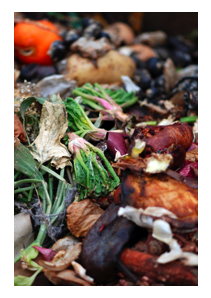
It’s important to understand the need for pasteurisation in commercial production of compost. Unlike the home compost where fresh kitchen scraps and possible free range home poultry manure can be used, commercial operations depend on the collection of “resource” from waste disposal systems. Food scraps can be left to putrefy for days before collection and animal waste can contain some pathogens that are harmful to humans. Collection is often made from very unsanitary conditions. Plant material collected from kerbside green waste may also contain some diseases that are disastrous for plant survival, e.g. phytophthora or myrtle rust can potentially wipe out whole stands of native flora.
Pasteurisation is a process of heating the materials in order to kill off any of the pathogens that are potential harmful to human health. The unfortunate thing is that it is indiscriminate and will kill off good bacteria as well as bad. In the home garden, compost generally won’t reach the 55oC required for pasteursing and will leave the beneficial micro-organisms in tact. The downside is that home composting won’t kill all harmful pathogens, weed seeds or plant propagules.
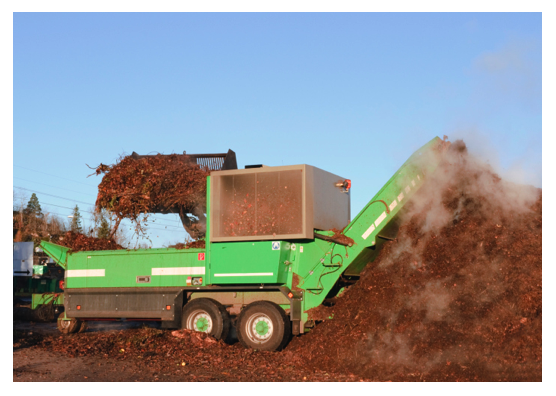
To reach effective pasteurisation, a compost heap has to reach a minimum of 55oC lasting for 3 days. This temperature is hot enough to pull your hand away because of the heat given off and is usually only achieved with long windrows that are about 4.5 metres wide and 2 or 3 metres high. The centre of the pile heats up while the outer 300mm layer encompassing the heap will remain cooler. This is why it’s important to turn the heap. The aim is to turn the outer material into the centre of the heap to ensure that all materials are effectively pasteurised. Commercial composters are required to turn the heap 5 times, maintaining temperatures over 55oC for at least 15 days in total to ensure pasteurisation of all material. Re-oxygenating the heap by turning it provides fuel for biological activity and this increased activity generates energy in the form of heat as a result. Pasteurisation is important for the health and safety of the end user.
Labeling of chemical contaminants
Under the labeling guidelines more information is divulged to us as consumers, if the producers choose to list the results of the new testing requirements for contaminants. At first you might be horrified to see levels of mercury, cadmium and other heavy metals listed on your bag of compost. Don’t be put off by this, it’s a good thing. Producers of organic composts now have to test for these under the most vigorous standards that labs can perform. Additional costs for these meant that historically, many compost producers would not perform these tests and composts would slip through with heavy metal levels higher than are now required. If test results comply with standards you can be assured that heavy metals are within safe limits.
Other chemical elements in some composts can be at levels that cause phytotoxicity (i.e. dangerous levels of nutrients that can cause plant death but no significant effect to human health). Compliance with the standards ensure against such phytotoxicity.
It’s not only heavy metals that are tested, it’s also pesticide residue. A bag of compost that displays compliance with the Australian Standard AS4454 (2012) is assured of negligible or non-existent residues. Listing of test readings, although initially confronting for the consumer, actually provide assurance of transparency by the producer. Rather this than the bag of compost that hides the results of these new tests because of failure to meet the standard that ensures your health and safety.
Other listings on the label
Under the new standards you could expect to see the pH level listed on the label. This tells you the acidity or alkalinity of your compost and is good for determining if you want to use the compost on acid loving plants like azaleas and camellias (who need a pH around 4).
Organic carbon levels may also be listed giving you a clear conscience knowing that your choice is helping the environment through increased carbon sequestration.
Take home messages:
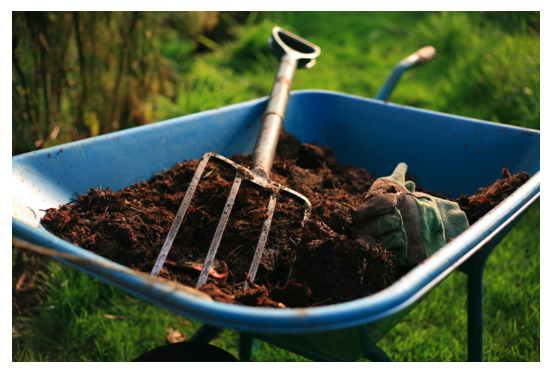
Always mix your compost and soil conditioners with soil and don’t use them as a potting mix.
Look for the Australian Standard on the bag for assurance of quality.
AS 4454 gives assurance of no weed seeds or plant progagules.
AS 4454 gives assurance of no pathogens present and is disease free.
Better to have chemical residues and heavy metal levels listed on the label than hidden from the consumer to show safety compliance.
When composting at home, turn your mix to rotate the materials from the outside to the inside.
If your home compost is allowed to dry out before completing the decomposition process, there is a chance of reinfestation of pathogens.
Don’t put diseased plant material into your compost.
Always compost wearing a collar and tie – apparently!




 Twitter
Twitter Facebook
Facebook
For your readers’ convenience,
AS 4454-2012
Composts, soil conditioners and mulches
is available here
https://infostore.saiglobal.com/store/Details.aspx?ProductID=1512286
Other Standards related to soil quality can be found here…
https://infostore.saiglobal.com/store/results2.aspx?searchType=power&publisher=All&doctype=All&status=Current&sfld1=ICS%20Code&sval1=13.080.99
Thanks for this info simon.
Thank you. Very informative – now I know what is what.